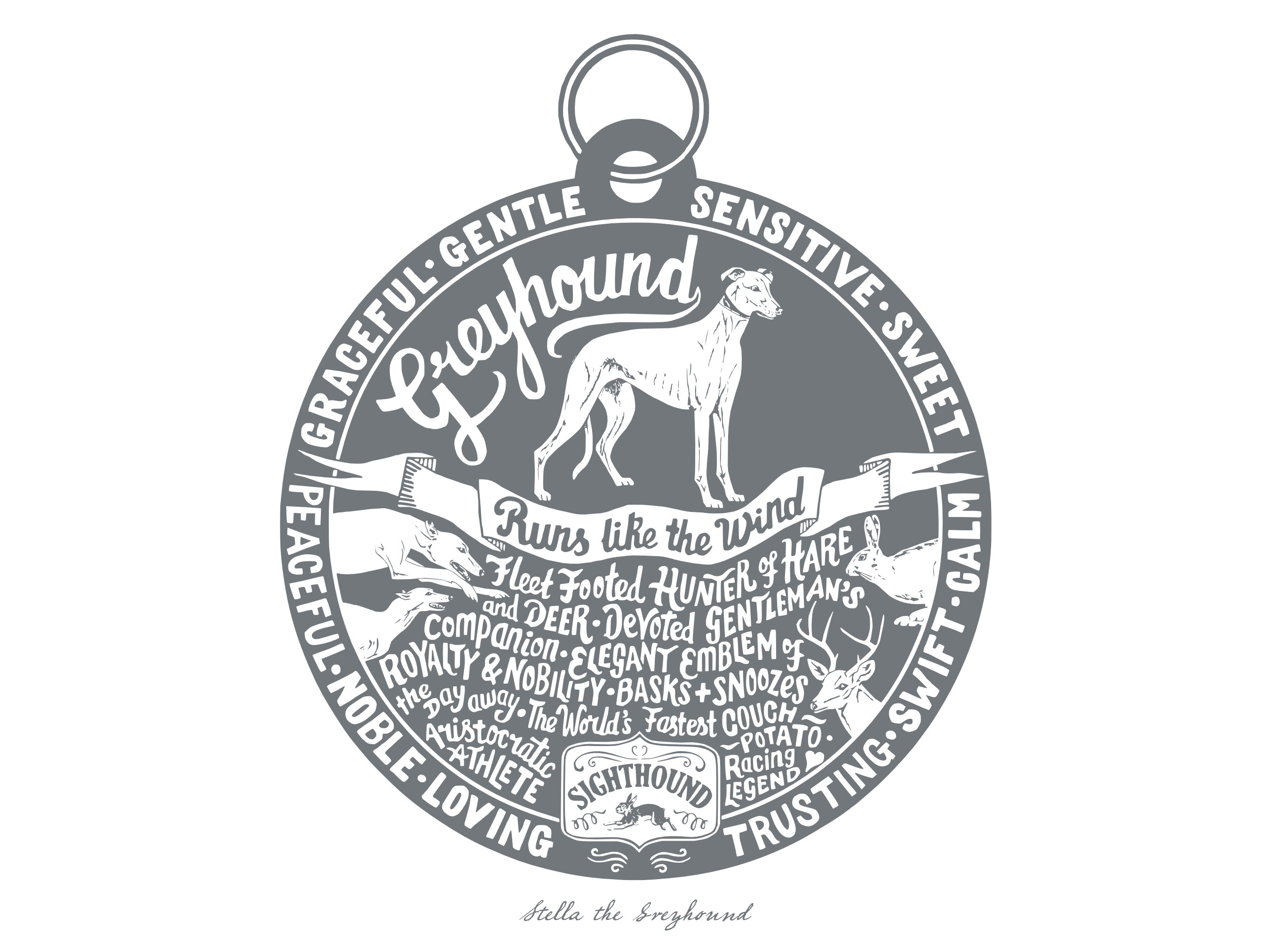“A Greyhound should be headed like a snake and necked like a drake, backed like a beam, sided like a bream, footed like a cat and tailed like a rat.” (Juliana Berners, 1486)
At least 4000 years old, the Greyhound is arguably the oldest purebred canine. Combining speed, grace and exceptional hunting ability with loyal and devoted companionship, the greyhound has been used in the sport of coursing (the pursuit of prey by sight instead of scent) since ancient times. It can reach speeds of between 40 and 45mph.
Pictured on walls of Egyptian Pharaoh’s tombs and owned by King Tutankhamen & Cleopatra 7th, the greyhound has a rich and noble heritage. The greyhound features prominently in Homer’s epic Ancient Greek poem, The Odyssey, about the Greek hero Odysseus and his journey home after the fall of Troy, upon which he is not recognised by anyone but his trusted greyhound, Argus. Having 'Argus eyes' has since become a byword to describe a person with a keen sense of sight.
Frequently a decorative emblem on tombs, the greyhound symbolized noble virtues and the aristocratic way of life. A valued status symbol in Ancient Arabia, the birth of a greyhound was said to be second only to the birth of a son. Their privileged status in society was also evident in the Middle Ages when it was a capital offence to kill a greyhound and only royalty or nobility were allowed to own one (not commoners - who were beheaded if caught with one). This ensured that the elite sport of greyhound racing remained just for gentlemen and nobility.
There is plenty of amusing greyhound behaviour terminology to learn. These big-hearted hunters like to alternate between the “Zoomies” (galloping with abandon on winged feet) and the “Snoozies” (lounging and dozing in comfort and warmth). Many delight in hoarding food and toys in their beds where they may practice “Roaching” (rolling onto their back and spreading their legs at odd angles in all directions, like a dead cockroach) and they may also enjoy a spot of “Roo-ing” (singing or howling).















